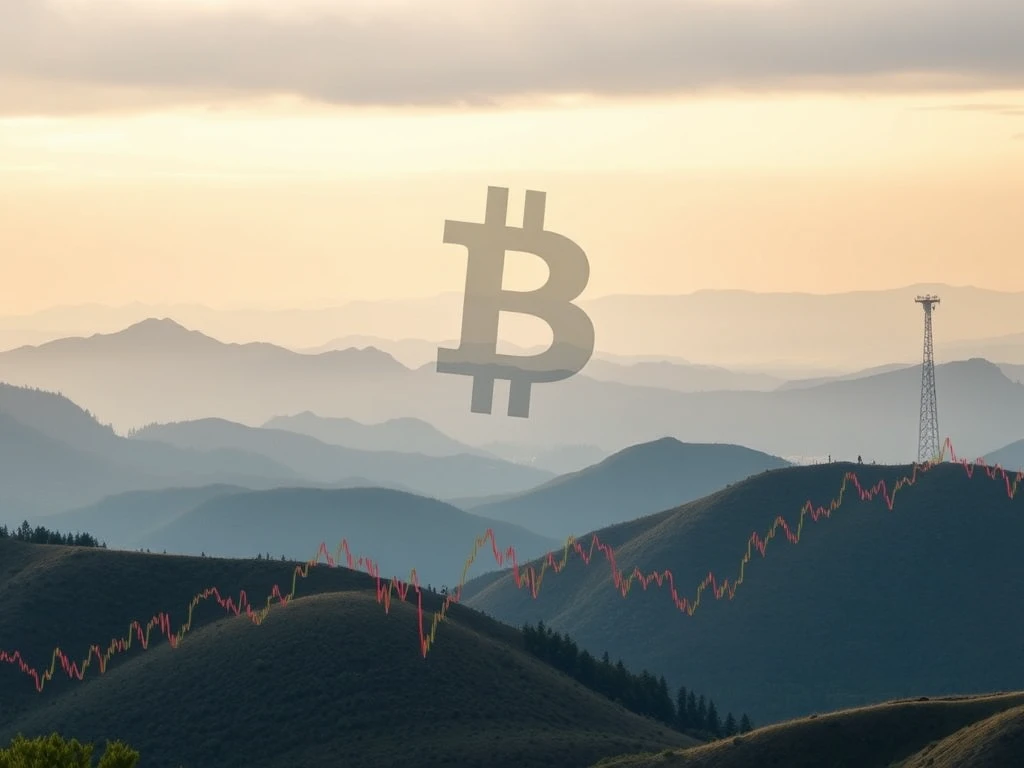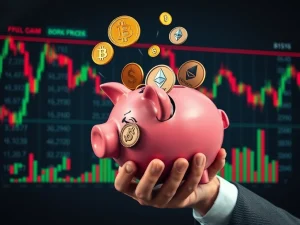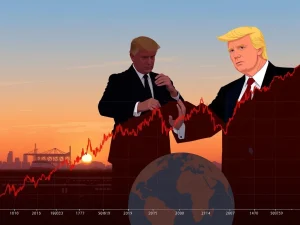Urgent: Bitcoin Price Builds Energy Amid US Stagflation Risk & Fed Rate Cuts

Is Bitcoin preparing for a significant move? Despite reclaiming the $107,000 level, the current rally feels different. There’s no widespread excitement or rush from everyday investors. Instead, the Bitcoin market appears driven by larger players, while crucial onchain signals show unusual quietness. Could this be the calm before a storm, influenced heavily by economic shifts in the US?
Understanding the US Stagflation Risk
The US economy is showing signs that point towards potential stagflation risk—a challenging mix of slowing growth, rising unemployment, and persistent inflation. While the Federal Reserve hasn’t used the term directly, recent data paints a concerning picture:
- Fed officials recently lowered the 2025 GDP growth forecast to 1.4% (from 1.7%).
- Inflation projections for 2025 increased to 3% (from 2.7%).
- Unemployment is now expected to reach 4.5% (up from 4.4%).
Private sector data confirms this trend, with falling exports and rising inventory stockpiles, partly reflecting concerns over ongoing tariff disputes. The revised Q1 GDP figure further highlights the economy’s fragility. This environment of uncertainty can often make assets like Bitcoin attractive as a hedge.
How Fed Rate Cuts Could Impact Bitcoin Price
The Federal Reserve faces a dilemma: fight inflation or support a weakening economy. Deteriorating economic data, particularly around jobless claims and inflation metrics, could push the Fed towards easing monetary policy. Potential Fed rate cuts in September or October are becoming a real possibility.
Historically, periods of monetary easing have been favorable for risk assets, including Bitcoin. Lower interest rates can reduce the appeal of traditional savings and bonds, encouraging investment in alternative assets. If rate cuts coincide with Bitcoin exiting its typical summer lull, it could provide a significant tailwind for the Bitcoin price.
Analyzing Onchain Data Signals
While the price holds steady, onchain data reveals interesting dynamics beneath the surface. Exchange inflows for Bitcoin, particularly on platforms like Binance, are at historic lows, even below levels seen during the 2022 bear market. This suggests a lack of participation from retail investors who typically drive exchange activity in a bull run.
However, this doesn’t mean there’s no buying. The rapid recovery from recent dips indicates strong demand, but it appears concentrated among sophisticated traders, funds, and institutional desks. Transaction counts are declining, but transaction sizes are growing, pointing to larger players dominating activity, much of which has moved offchain to platforms like perpetual swaps.
A Bull Market Without Retail? The Bitcoin Market Outlook
Can the current Bitcoin market sustain its upward momentum without broad retail conviction? This is a key question. While institutional interest provides a solid foundation, previous major breakouts have often been fueled by widespread public enthusiasm (FOMO). Analysts note that fundamental onchain strength, like network growth and liquidity, is still a missing piece.
Despite the quiet onchain retail front, long-term holders are steadily accumulating Bitcoin. The ratio of long-term to short-term holders is increasing, a pattern observed before previous rallies. Some analysts suggest this accumulation phase could last several more weeks, potentially setting the stage for a powerful move later in the year, possibly targeting the $160,000 range if historical patterns repeat.
Summer months historically show lower average returns for Bitcoin, often acting as a consolidation period. This aligns with the current accumulation trend seen in onchain data. The combination of long-term holder accumulation, potential Fed rate cuts, and increasing stagflation risk could create a compelling environment for the Bitcoin price as the market exits its seasonal slump, but ultimately, a sustained breakout may still require a clear pickup in broader demand and conviction beyond just institutional players.
In summary, while macro factors like stagflation risk and potential Fed rate cuts provide a bullish backdrop, the current Bitcoin market is characterized by institutional activity and quiet retail participation, as seen in onchain data. The coming months may involve continued accumulation, with the potential for a significant move aligning with economic shifts and the end of seasonal trends. The key to unlocking new highs lies in whether this institutional-led market can eventually spark broader demand and conviction.








